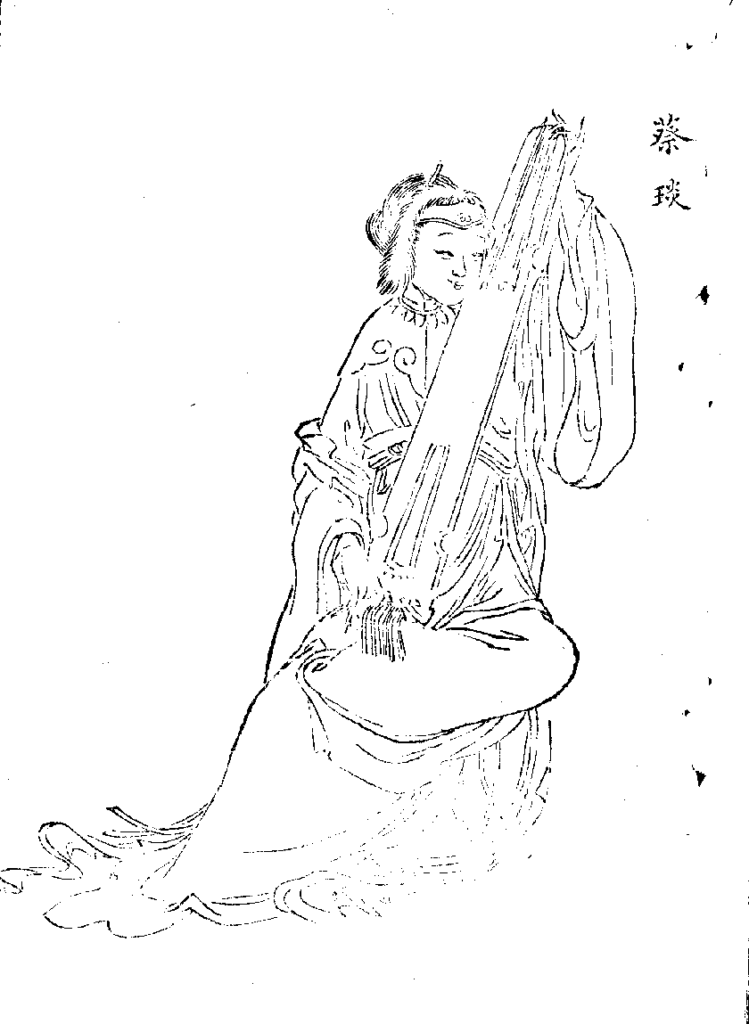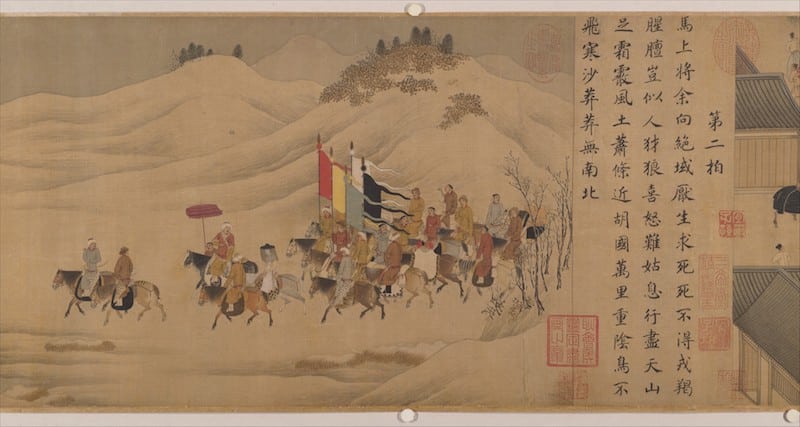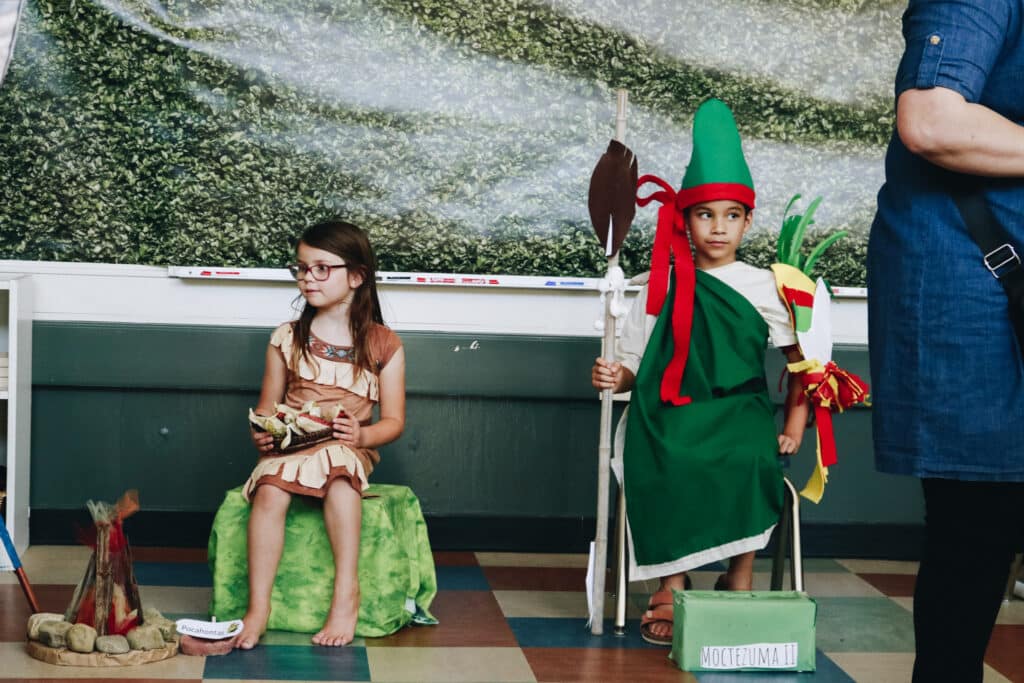It’s time for our last Somebody of the year—CAI WENJI. While not famous in the West, Cai Wenji was a Chinese composer and poet who lived around the same time as Marcus Aurelius, the famous Roman emperor and philosopher. Her life spanned from around 178 AD to sometime past 206 AD.

Cai Wenji (also known as Cai Yan or Cai Zhaoji) was the daughter of a famous scholar from the Eastern Han dynasty. She was married young, but her first husband died shortly after they were married. Two or three years later, China entered a period of unrest. During this time, Cai was captured by a band of tribal nomads called the Xiongnu, and she was taken as prisoner back to their lands in the North. During her captivity, she was forced to marry the Xiongnu chieftain and bore him two sons. After twelve years in the Xiongnu region, one of the leaders from Cai’s home region paid a large ransom in the name of Cai’s father for her release. However, Cai Wenji had to leave her children behind. Years later, she wrote the “Poem of Sorrow and Anger” about her kidnapping and time with the Xiongnu—it ends with a moving passage about the immense joy and sorrow combined at her return home. A famous poem set to music, Eighteen Songs of a Nomad Flute, is also attributed to her, as well as a few other works.

Cai Wenji’s story has continued to inspire later artists. Her return to Han territory has inspired numerous paintings called Cai Wenji Returns to Her Homeland and traditional renderings in Beijing opera.

By Creator:Unidentified Artist – This file was donated to Wikimedia Commons as part of a project by the Metropolitan Museum of Art. See the Image and Data Resources Open Access Policy, CC0, https://commons.wikimedia.org/w/index.php?curid=57372151 
By Unknown author – CHINA Art Pic Stock (China Artistic Publisher, Beijing Panoramic Visual Pic LTD) Cat:p127, CD41:img0158, (purchased and donated by Kosi Gramatikoff User:kosigrim., Public Domain, https://commons.wikimedia.org/w/index.php?curid=34168381
She also has two craters in space named after her—one on Mercury called Ts’ai Wen-Chi and one on Venus called Caiwenji.

She is also a character in several video games, one of which depicts Cai Wenji fighting by casting energy balls and shock waves through the strums on her harp.
The quotation chosen for today’s wallpaper is “Life lies ahead” and comes from Cai Wenji’s famous work. Though short and simple, it epitomizes the idea that, whatever sorrow or joy lies in the past, there is life (and maybe even a sliver of hope) in the future. As we look toward the summer let us not forget our experiences in the days behind, but look toward the days ahead knowing that there is life and fullness and hope to be had there.

Don’t forget to check out our Instagram stories for our free smartphone wallpaper, or download below!













